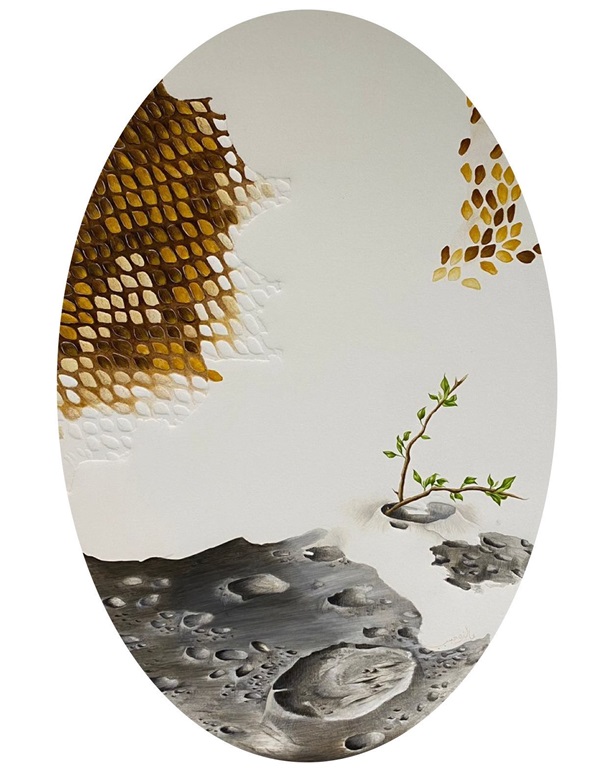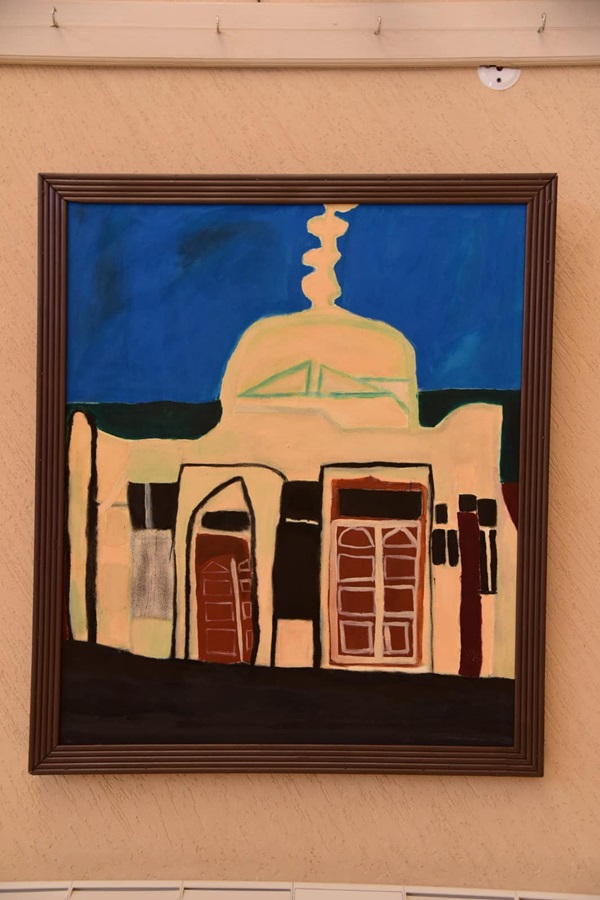Written by: Haroon Shuaib
Posted on: December 11, 2024 |  | 中文
| 中文
Art has the power to evoke the emotions of empathy and help us understand people, places, periods of history and issues with which we may otherwise be unfamiliar. No society or community can exist, and definitely thrive, without giving creative outlets to individuals for expressing aspirations, emotions, telling stories, and conveying ideas. Balochistan, a province of Pakistan with a civilizational history that predates even the bronze age of Indus valley civilization. Today, while the region is caught within a complex web of social, political and economic issues, its rich strands of cultural and artistic strands remain beautifully intact: understated, ingenious and unique. Ironically, it is obscure and neglected in the mainstream art landscape of the country, just as Balochistan’s people and their challenges.
Balochistan has a population where more than 75% consists of youth. The fact that Quetta, the capital of a province that is largest in terms of geographical area, has only three public universities that offer bachelor’s degree in fine arts, says a lot. None of the universities, even the University of Balochistan that has been operating since 1970, offers a masters in fine arts degree. To understand the extent of the immense creative talent and aspirations that exist in the province, one just has to take a moment to look at the thesis display of the graduating class of 2024, from the Fine Arts Department of Balochistan University of Information Technology, Engineering & Management Sciences (BUITEMS). The Department was established as recently as 2010. The thesis is currently on display at Balochistan Baithak Gallery at Quetta DHA in a show aptly titled: “Rang Batain Karain” (Colours may Speak). The show was inaugurated by Mr. Hamza Shafqat, Commissioner Quetta, who described the talent of the students as exceptional, and stressed the importance of a society offering avenues for creative and purposeful pursuits for the youth.
The exhibition features the works of eleven exceptional young artists, and each brings a personal expression and palette to their work, while their perspectives range from deeply personal to global. Noor Fatima’s use of colour psychology to highlight the tragedies of Gaza, reflects how pain can be personal and yet becomes part of the global experience. She demands the viewer to stare at each piece for a minute and then look away and blink to see an iconic image of Palestinian resistance that have now been documented in the collective history of mankind as symbols of violence and resistance. Sumaiya Rajput’s layered works bridges the gap through her clever use of lenticular art technique, reflecting another innovative approach to storytelling by an artist.
Nisar Ali, a young artist from Hazara community has large canvases focusing on self-reflection and identity. One of Nisar’s canvases has a torn page from a note book with ink-inscribed Persian verses of Allama Iqbal, about self-actualization and the role of knowledge in a man’s destiny. Maqsood Taran’s uses vibrant colours to display his command over print-making, while his subjects range from objects of nature, a goldfish or a rooster, created in all of nature’s glory as seen through the keen eye of an artist with each hue and detail captured to the minutest detail.
Aiza Habib takes the viewers on a journey of concealed experiences through her dreamscapes where symbols such as trees, celestial objects and a lurking serpent intertwine on her interesting oval canvases while she very creatively employs oval frames. Her deft use of age-old miniature technique to depict a very modern sensibility is a testimony to how true the artist remains to her medium, while maneuvering a very modern sensibility. Hamna Nibras presents her print making work that delves into themes of entrapment and internal conflict, her work leaving a lasting impression on the spectator with her wide-eyed subjects, use of shadows and lights and the ants that creep over bare skins. Wasif Habib’s use of oil paints, his bold use of colours, his large canvases adorned with childlike playfulness, add a unique perspective to the show.
The exhibition also has the works of Fasih ul Hassan, Jiya Batool and Jamila Murad on display, who use miniature as their medium of choice, but break away from the bindings of this scrupulous medium while they studied their equally introspective subjects. Saher Amjed used her installation art to depict the Scythian civilization. Her fascinating study of the Eastern Iranic equestrian nomadic people, who had migrated from Central Asia. They remained established from the 7th century BC until the 3rd century BC, was an immersive experience. She demanded the viewer to walk through a cave like structure adorned with cave art on the dark walls, and reflect on how transient time, space and politics of a people are, while what survives is their ethos and their contribution to human evolution.
Together, these 11 artists of the class of fine arts 2024 graduating from BUITEMS showcased at Rang Baatain Karein is a testament to the power of art to tell the story of a people whose inherent creative talent and the spirit to express their individuality remains intact, despite the challenges they live through. The backdrop may be stark and parched, just as the neglected and overlooked arid stretches of Balochistan, humans retain the resilience and the inherent quality to create beauty and express themselves for those who care to take a moment and observe.
Rang Baatain Karein is on display at Balochistan Baithak Gallery at DHA Quetta from 9th till 14th December. The gallery hours are from 11:00 am to 5:00 pm, Friday to Wednesday.

Aiza Habib

Wasif Habib

Noor Fatima
You may also like: